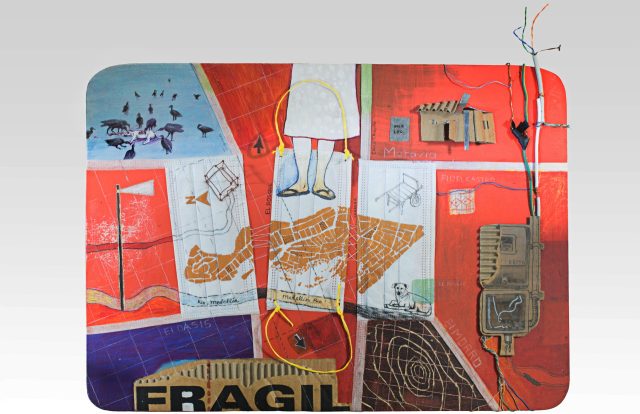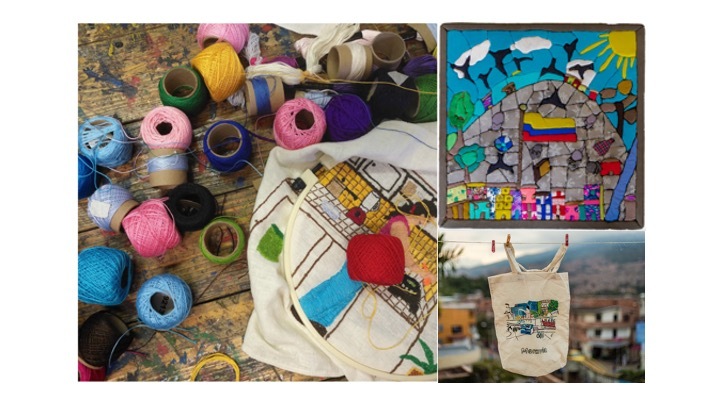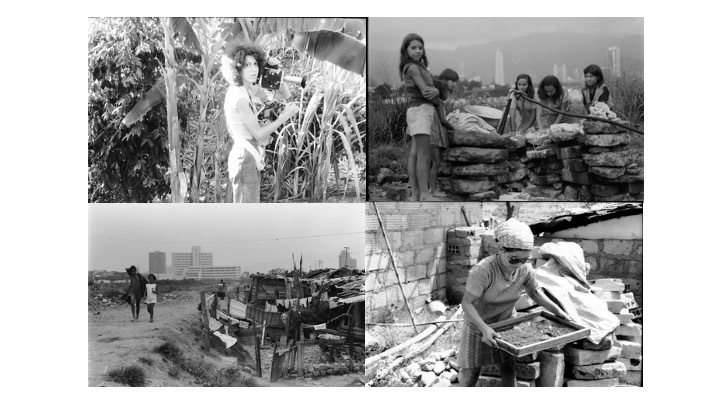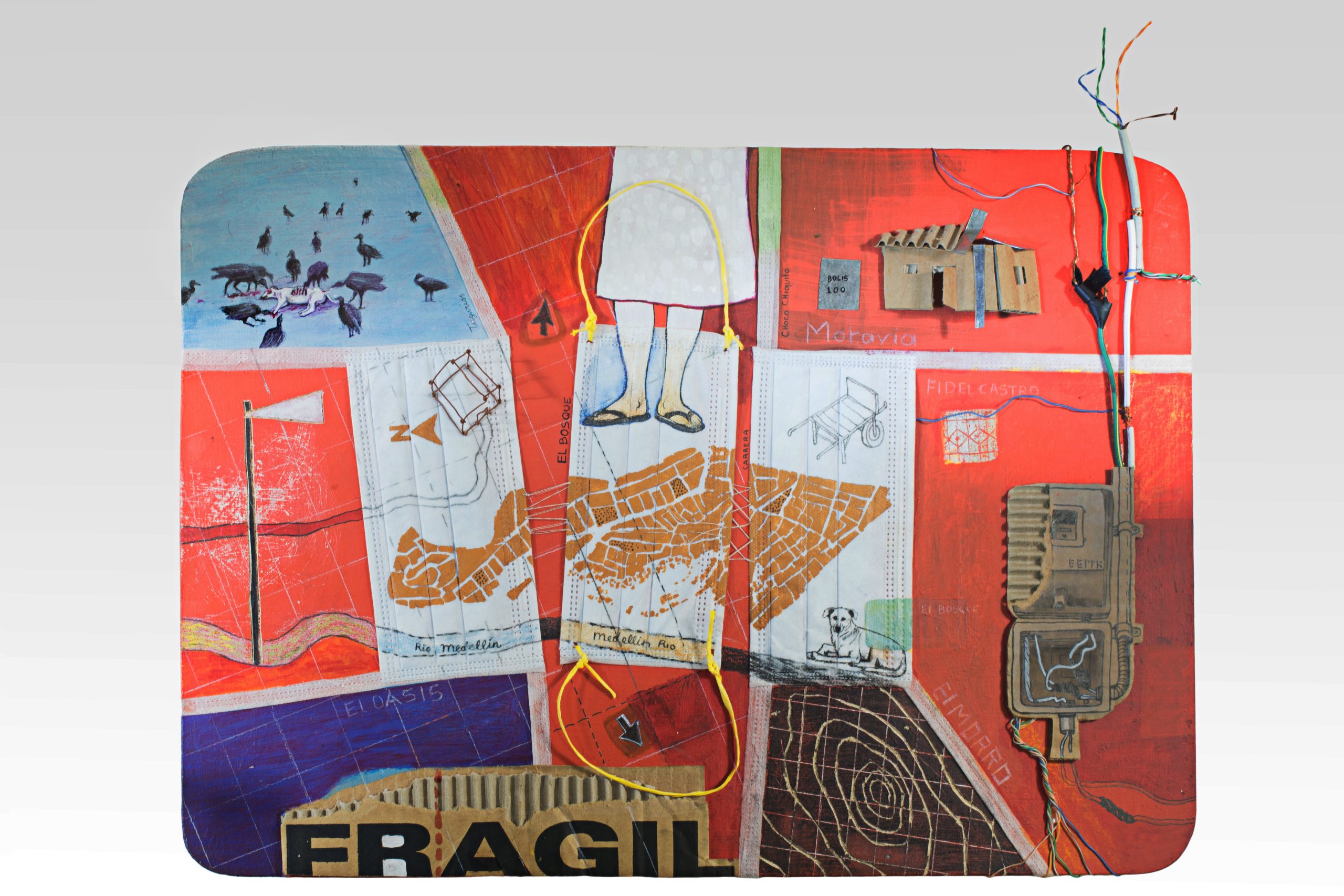
Location
Medellin, Colombia
Synopsis and Position
This project challenges narratives about stigmatised communities and places while engaging in creative, yet critical, responses to the present and exposing alternative paths to the future. We propose living archives as a decolonial methodology to re-centre life to imagine forms of living heritage based on relational forms of thinking and being. This approach accounts for the everyday interactions, the polyphony of (hi)stories and the multiplicity of spatial practices often silenced. We will focus on two intertwined strategies of co-creation: gendering the archive and weaving (hi)stories of reclamation to reframe a repository of urban memory and living heritage into a process of collective imagination to counteract the existing enduring eviction threats.
Objectives and Methods
This project aims to co-create a living archive for Moravia using collective mapping for imagining gendered urban futures, textile practices, audio-visual material, and historic photos. We use a living archives approach to reveal the process and practices of memory transmission in MoraviaBuilding on years of partnership and collaboration with the Centro de Desarrollo Cultural Moravia (CDCM) this project aim is threefold:
-
- To trigger mapping practices that trace memories of displacement and reconstruction to co create alternative urban futures.
- To reveal the archival significance of embodied knowledge and collective experiences of intergenerational memory transmission using textile practices, audio-visual material, and historic photos.
- To expose narratives of reclamation of the historic role of women in neighbourhood building processes to leverage new spatial imaginations of gendered urban futures.
Workshops and Events
To be confirmed
Activities
- Inventory of existing textile practices, audiovisual material and historic photos of the Neighbourhood
- Preparatory meeting + Digitalization of the new collection of maps and pictures
- Co-design of participatory mapping activities
- Collective Cataloguing of existing material to be intervened and performed
- Coding website prototype
- National exchange of sewing woman
- Participatory mapping and co-design of gendered urban futures
- Report writing
- Exhibition artefact making
- Itinerant Exhibition display
- International event with REDESUR and the Global Platform to the Right to the City to showcase the results


Living Archives: Weaving gendered (Hi)stories of Territorial Reclamation is a collaborative research-based design project that seeks to recognise practices of urban reclamation, led by women in Moravia, Medellin (Col). Moravia is a neighbourhood of ‘migrants’ in constraint flux and originated in the 70’s as a by-product of forced displacements, the violence of war and social injustices still facing ongoing threats of eviction. It is a territory inhabited by over 45,000 people mostly living under precarious urban conditions and high population density. Building upon years of partnership and learning alliances. The learning alliances have been integrated by scholars and students of the MSc Building and Urban Design in Development from DPU, University College London, scholars from Newcastle University (2023), the team of the Centro de Desarrollo Cultural de Moravia (CDCM), Planearte SAS, members of the various community organisations in Moravia such as Moravia Resiste, JARUM, Fundación Oasis Tropical, Colectivo TriciLab, Mama Chila Tours, and the Red Cultural Comuna 4, and members of the Cooperativa de Arquitectura Coonvite (2020 & 2021). We argued that the neighbourhood itself is a living archive that bears witness to a past and present of reclamation, showing the spatial agency of its inhabitants as key to shaping alternative futures.
The project proposed two intertwined strategies of co-creation: gendering the archive and weaving (hi)stories of reclamation to reframe a repository of urban memory and living heritage into a process of collective imagination to counteract the existing enduring eviction threats. In Moravia, living archives have been crucial in mobilising women’s emancipatory transformation and as artefacts for advocacy. Our project focuses on the living heritage of the city, which is constituted by processes of community organisation and neighbourhood self-construction. We agreed to focus on three issues that are at the heart of the territory’s historical and current claims for the right to the city: security of tenure, ‘reception’ of migrants and ecological reparations. Through processes of co-creation, we found that living archives 1) are inscribed in bodies, self-built urban spaces, and collective reclamation practices, 2) can help to specialise our emotions to bridge connections with our past in the present, triggering processes of territorial healing (Ortiz & Gómez-Córdoba, 2023) and 3 ) represent a call for collective actions that observe, recognise and appreciate the territory as an ‘affective infrastructure of knowledge co-production’ (Ortiz et al., 2022). Through a living archive, communities establish multi-temporal conversations about their connections to the territory, to reveal everyday interactions, the polyphony of histories and the multiplicity of often silenced spatial practices.
Our main outputs are two murals made by local artists in strategic public spaces, 1 report of the co-creation process in Spanish and English, a dedicated IG channel and a digital archive (https://archivovivomoravia.org/) with over 500 records about the neighbourhood. This archive contains co-curated timeline and historical cartographies, academic articles, textile testimonies, audio-visual material, and photographs, among other content co-created during the exchange process that was part of the three iterations of the learning alliances.

